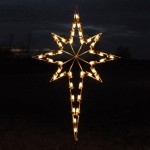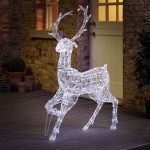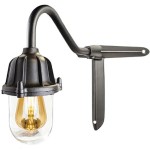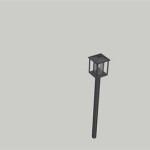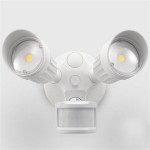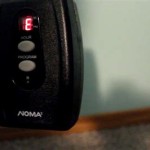How To Connect Outdoor Lights to a Power Source: A Comprehensive Guide
Illuminating outdoor spaces enhances aesthetics, improves safety, and extends usability into the evening hours. However, effectively powering outdoor lights requires careful planning and adherence to electrical safety guidelines. This article outlines a detailed process for connecting outdoor lights to a power source, emphasizing safety protocols and best practices.
Planning and Preparation: Assessing Your Needs and the Environment
Before commencing any electrical work, meticulous planning is essential. This phase involves evaluating the lighting requirements, assessing the existing electrical infrastructure, and understanding the environmental conditions. Factors like the type of lighting, the distance from the power source, and the presence of moisture should be considered.
First, determine the total wattage of the outdoor lights to be installed. This information is typically found on the light fixtures themselves or in their accompanying documentation. Calculating the total wattage is crucial for selecting appropriate wiring and circuit breakers to handle the electrical load safely. Overloading a circuit can lead to overheating, tripped breakers, and potentially hazardous situations.
Next, examine the location where the lights will be placed. Consider the proximity to water sources, such as sprinklers or rain runoff. Damp or wet locations necessitate the use of waterproof or weatherproof fixtures and wiring to prevent electrical shorts and corrosion. Also, assess the soil conditions, as this will influence the type of conduit or direct burial cable necessary.
Finally, evaluate the existing electrical infrastructure. Determine the capacity of the existing circuits and the availability of spare circuits. If an existing circuit is used, ensure that it has sufficient capacity to handle the additional load of the outdoor lights without exceeding its rated amperage. If necessary, install a new circuit specifically dedicated to the outdoor lighting.
Gather the necessary tools and materials. These typically include: appropriate outdoor-rated wiring (UF cable or THWN wire inside conduit), weatherproof junction boxes, wire connectors suitable for outdoor use (gel-filled connectors are recommended), conduit (if required), a circuit breaker (if installing a new circuit), a GFCI outlet (ground fault circuit interrupter) for safety, wire strippers, pliers, screwdrivers, a voltage tester, a drill with appropriate drill bits, and safety equipment such as gloves and safety glasses. If digging is required, a shovel and potentially a post hole digger might be needed.
Selecting the Appropriate Wiring and Protection
The choice of wiring is paramount for ensuring the safe and reliable operation of outdoor lights. Outdoor wiring must be specifically designed to withstand environmental factors such as moisture, temperature variations, and physical damage. Two primary options for outdoor wiring are UF (Underground Feeder) cable and THWN (Thermoplastic High Heat-resistant Nylon-covered) wire used in conjunction with conduit.
UF cable is designed for direct burial in the ground. It is a solid-core cable with the conductors embedded in a waterproof thermoplastic jacket. The jacket protects the conductors from moisture, chemicals, and physical abrasion. UF cable is suitable for burying directly underground without the need for conduit, but it can also be run inside conduit for added protection, especially in high-traffic areas or where the cable might be subject to damage.
THWN wire is a single-conductor wire with a thermoplastic insulation and a nylon jacket. It is specifically designed for use in wet locations and is typically run inside conduit. Conduit provides physical protection to the wires and prevents them from being damaged by water, rodents, or accidental dig-ins. Conduit can be made of PVC (polyvinyl chloride) or metal (rigid metal conduit or EMT – electrical metallic tubing), depending on the specific application and local electrical codes.
The size of the wiring (wire gauge) is determined by the amperage draw of the lights and the distance from the power source. Consult a voltage drop chart to determine the appropriate wire gauge to minimize voltage drop over long distances. Voltage drop can cause lights to dim or function improperly. Using a wire gauge that is too small can result in overheating and potential fire hazards.
Ground Fault Circuit Interrupters (GFCIs) are essential for outdoor electrical circuits. GFCIs are designed to detect even small imbalances in electrical current, which can indicate a ground fault. When a ground fault is detected, the GFCI instantly cuts off the power to the circuit, preventing electrical shock. GFCI outlets or circuit breakers should be installed to protect all outdoor circuits.
Weatherproof junction boxes are required to protect wiring connections from moisture and corrosion. These boxes are designed to seal the connections from the elements and prevent water from entering the electrical system. Use only junction boxes that are specifically rated for outdoor use. The junction boxes should be securely mounted to a stable surface, and all openings should be properly sealed with weatherproof sealant.
Connecting the Lights and Testing the Installation
After selecting the appropriate wiring, protective measures, and safety components, the physical connections can begin. This phase requires meticulous attention to detail and adherence to electrical codes to ensure a safe and reliable installation.
Before commencing any wiring, disconnect the power to the circuit at the main electrical panel. This is a critical safety step that prevents electrical shock. Verify that the power is off using a voltage tester. Test the circuit at the point where the wiring will be connected to ensure that no voltage is present. Never assume that the power is off; always verify with a voltage tester.
If installing a new circuit, turn off the main breaker before installing the new breaker. Securely connect the new breaker to the bus bar in the electrical panel and connect the neutral and ground wires to the appropriate terminals. Run the outdoor-rated wiring from the electrical panel to the location where the outdoor lights will be connected. If using conduit, ensure that it is properly secured and grounded.
When making wire connections, use wire connectors that are specifically designed for outdoor use. Gel-filled wire connectors are recommended because they provide a waterproof seal that prevents corrosion. Strip the insulation from the ends of the wires, twist the wires together tightly, and then screw on the wire connector. Make sure the connector is securely tightened and that no bare wire is exposed.
Mount the outdoor lights securely to their intended locations. Use appropriate mounting hardware that is designed for the type of surface to which the lights are being attached. Ensure that the lights are level and properly aligned. Connect the wiring to the light fixtures according to the manufacturer's instructions. Pay close attention to the polarity of the wires (black to black, white to white, green or bare copper to ground).
Once all the wiring connections are complete and the lights are securely mounted, turn the power back on at the main electrical panel. Test the installation by turning on the lights and observing their operation. Check for any signs of problems, such as flickering, dimming, or overheating. If any problems are detected, immediately turn off the power and troubleshoot the issue.
Inspect all wiring connections and junction boxes to ensure that they are properly sealed and weatherproofed. Use weatherproof sealant to seal any gaps or openings around the junction boxes. Check the GFCI outlet or circuit breaker by pressing the test button. The GFCI should trip, cutting off the power to the circuit. Reset the GFCI after testing. This ensures that the GFCI is functioning correctly and will protect against ground faults.
Properly secure all wiring and conduit to prevent damage or accidental disconnections. Use cable ties or straps to secure wiring to walls or other surfaces. Ensure that conduit is properly supported and protected from physical damage. If burying UF cable directly underground, bury it at the appropriate depth according to local electrical codes (typically at least 18 inches). Backfill the trench with soil and compact the soil to prevent settling.

How To Power Outdoor Lights

How To Run Two Lights From One Switch Electrical

How To Install Outdoor Lighting Junction Box Aka Wire Mount A Landscape Transformer

How To Install Outdoor Lighting And Diy Family Handyman
How Do You Install Philips Hue Outdoor Lighting On High Voltage Coolblue Anything For A Smile

25 Junction Box Outdoor Waterproof Electrical 3 Way Plug Line Plastic External M25 Coaxial Wire Connector Electric Power Cord Boxes Suitable For Lights Landscape Lighting 3way Intshade

Philips Hue 95 Watt Outdoor Low Voltage Power Supply 1 Pack 1748830vn The Home Depot

Project Case Study Outdoor Lighting In Columbia Il Linnemann Lawn Care Landscaping Blog

How To Power Garden Lights The Architects Diary

25 Junction Box Outdoor Waterproof Electrical 3 Way Plug Line Plastic External M25 Coaxial Wire Connector Electric Power Cord Boxes Suitable For Lights Landscape Lighting 3way Intshade
